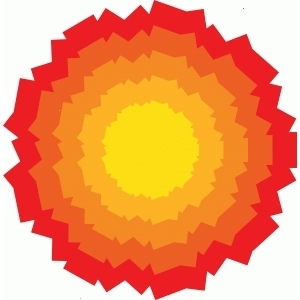A chefs knife will do for everything. Keep it sharp enough and it’ll even slice bread. As for the onion horizontal cuts are unnecessary. Offset radial cuts are fine (as you move away from the centre vertical cut you angle it more).

What’s the x axis on those graphs? I can’t zoom in enough on this picture to read it. I did look it up, but I only found versions with the exact same resolution
It’s not your fault; even if you could zoom in, there’s not enough resolution to make out any details.
Your Lemmy app is probably preventing you from zooming images beyond a 1:1 pixel ratio, preventing you from zooming them past their native resolution. Voyager doesn’t have that issue, if you were considering a different app.
I have absolutely no idea. I grabbed the first illustration that showed what I described (poorly).
I think it says “Number of Cuts,” but it’s really hard to tell.
As a chef, the only inaccuracy I see here is that bamboo cutting boards are good for knives. They are a great, cheap, sustainable option, but the silica content makes bamboo incredibly hard, and it will dull your blades faster than wood or plastic cutting boards.
What about using the bread knife for meat?
Edit: also what’s “produce”?
I don’t see this suggesting a bread knife for meat, but a dull serrated blade beats a worn plain edge for any purpose. And produce is anything grown like fruit and veg.
It’s got produce, bread, and meat highlighted for the bread knife.
The only thing I’ve ever used a bread knife for is bread.
Ah I didn’t see that little spiral graph. I agree with you for anyone who keeps their knives sharp. But if you’re trying to cut thin slices off a roast and have to choose between a bread knife and a dull chef’s knife, I’d likely go for the bread knife. That said, I don’t know they intended it that way, and it totally could have just been an error.
“Produce” is presumably fruit and vegetables, although that’s a pretty broad category to lump together given that so many vegetables behave differently. Consider a tomato versus lettuce or a yam, for instance.
The infographic only states that a bread knife is good for bread. It is correct in this regard.
Produce is the general term for fruits and vegetables and things of the like.
The bread knife has markers in the produce, bread, and meat sections
I never understood why people use serrated knives for bread, it gets crumbs everywhere. I use a sharp chef knife instead and it’s much cleaner. I use it for 95% of stuff, there’s no much need for any other.
If you’re cutting soft soft bread, then a plain blade is fine, but if it’s a crusty bread like a sourdough, the serrated blade is much better at cutting the crust without crushing the soft interior (IME, not a chef)
That’s one way to say you never had anything besides soft buns and bread.
Once you get full grain or (as someone mentioned) a bread with a hard crust, you will wish for a serrated knive.I’m European. I don’t eat soft bread. I think none of you have a sharp knife.
Oh it’s plenty sharp. My finger tested it :)
American for fruit and veg.
Thanks!
Digamos verduras en la mejora de América
Bamboo cutting boards suck because you can’t put then in the dishwasher. They break apart from the heat, which also means that you can’t get the water hot enough to sanitize (140°F+), so hand washing is a non-option either without burning yourself.
The best cutting boards use end-grain for this exact reason. It’s not just a decorative thing. The direction of the wood grain directly determines how quickly the board will dull your knife. Wood is made of two main parts: A hard fiber, and a soft filler in between each fiber. The hard fiber is what dulls your knife when you cut.
Imagine cutting on a tightly packed bundle of really tiny straws. If you cut across the bundle, your knife will be cutting into each straw, dulling in the process. But if you cut on the end of the bundle, the knife blade will slide between the straws instead of cutting them.

The straws will last longer when you’re cutting on the end (because you’re not cutting them) and your blade will last longer (because it isn’t cutting the straws). And an end grain cutting board is essentially cutting on the end of the straw bundle.
darn I need to save this 🔖
I will add another bullet point to the list above, specifically regarding cutting boards. Poly cutting boards are also acceptable and primarily what I use. However, if I see you using a glass cutting board or a plate as a cutting board, or chopping directly on your granite countertop, I am afraid I am going to have a hurt you.
I am, as you can imagine, the default knife sharpener within the circle of my family and friends. However for quite some years I would not sharpen any knives for my sister anymore because she refused stop using her stupid 1980s glass cutting boards. (I believe they were probably actually intended to be serving trays, but good luck making people understand that.) She kept complaining that my sharpening was “no good” because her knives dulled so quickly.
I was eventually able to coordinate with my brother in law who was also sick of it, and we located all of the glass boardlike objects in the house and surreptitiously threw them away.
Is “poly” a local american slang for plastic? Anyway I prefer wood because I’d rather have some wood fibres in my food than microplastic. Not that anyone knows if it’s actually harmful or not
Sort of. Polymer, actually. It’s a common end-run around calling something “plastic” outright because that in and of itself is typically a shorthand for “cheap” or “flimsy.”
Anyway, the plastic cutting boards in commercial use (i.e. the ones I use because I am that kind of nerd) are made of high density polyethylene.
Wood for most stuff, plastic for meat and fish because I don’t want meat juice soaking into the wood.
And now all my fruits taste like garlic, thanks
Fair point
Apparently, surprisingly, bacteria grow/anchor better in plastic. than wood. (wood might still absorb the juices more easily)
Doing the lord’s work here.
in my experience, granton blades just make the food stick more. i always figured it was just a lazy way for companies to save on materials.
It doesn’t help them save on material since the knife is ground from an originally flat slab of steel. The amount of material they remove from that bar is irrelevant to their materials cost, although it does add a bit of machine work.
The scallops in the blade are effective at preventing some foods from sticking only if you are using a long slicing motion. When chopping down from above they accomplish nothing.
that settles it - i’m just a bad choppa
Get to it!
- Why is this a jpg?
- No need for the horizontal onion cuts
- Nice guide nevertheless
This chart is missing a knife that I have. The blade hooks forward instead of backwards, like a bird’s beak.
Since it’s small and the tip extra pointy, I use it for precision cutting. I’ve also found it useful for thin slides of cheese, since the blade is also not as thick as the other knives in my set. Still, I’m wondering what its actual purpose is for.
Santoku knife. I was just about to comment the same thing.
I have that one too but that’s not the knife I’m talking about. It’s about the size of a paring knife and it hooks forward. Almost like a scythe but not nearly as dramatic or a curve.
(When I get home from work I can upload a picture if anyone cares to help out.)
I’m pretty sure it’s just called a bird’s beak paring knife.
Reading further about it, it’s intended for tasks while holding the object you are cutting, rather than using a cutting board. Like peeling an apple in your hand.
Ah okay that makes sense. I prefer a peeler, but I can see purists preferring such a knife. Thanks for the info.
Here’s my sacrilege:
A serrated knife is all you need for 99% of the time
So you’ve got a dull chef’s knife, because that is the 90% knife, not a bread knife.
I use it for tomatoes and nobody will ever change my mind.
Exactly a decent quality serrated will cut a perfectly clean edge on almost all foods
they do tend to work more consistently and stay sharper for longer if you rarely/never sharpen your knives or dont have the proper equipment. a well sharpened chef’s knife though is better but i have to admit i dont have the energy always to properly maintain the edge on them
If you don’t have a very sharp knife a serrated one works very nice on tomatoes and bell peppers
Every person I’ve seen who does this sucks at cooking and everything around it. A non-serrated knife is what works 99% of the time, as it won’t fuck up many things that are serrated one will.
I use a couple of damp paper towels under the chopping board to hold it still, then when I’m done I use the damp paper towels to wipe the knife, board, and bench
Have you never heard of cross-contamination? Using the same towel that touched the counter to wipe the knife and cutting board as well is disgusting as fuck.
For your sake (and the sake of any guests you have over), I hope you’re talking about a workshop knife, not the kitchen. I hope you never get a restaurant job, either.
Some people regularly wipe down their counters, or just fucking disinfect their work surfaces before they start cooking. Non-toxic disinfectants like Mean Green will work in 2 minutes, and you can spray it before you start pulling out your pots and pans. Then just wipe the counters really quick, and you’re good to go.
No, you are wrong. Countertops can be cleaned just as well as your kitchen utensils can. People make dough on them all the time.
Not with meat, or course. When chopping vegetables.
I just use a small knife and a big knife. This covers all use cases. Yes they also cut bread because I keep them sharp.
Chinese chef knife is missing. It’s not a meat cleaver, the blade isn’t nearly thick enough for it, but it does make quick work of veg. It’s also one of the only knives used for Chinese cooking. Learned about it from Martin Yan.
Of course this is done in idiocy imperial. Fuck your 'Murican “we need to be special so we use this objectively shitty thing to be different”. Only 3% of the world has a use for this, while the rest 97% are fucking tired of having to do extra work to convert.
What the fuck are you on about? What do you need to convert in this?
I guess things like dicing = 1/4" cubes
Yeah, because saying “6.25mm cubes” is so much more efficient /s
If you use wooden cutting boards / blocks, rub some mineral oil into them every once in a while. This will reduce the water they absorb and make them less likely to warp or split.
I see the diagram: the first knife is for cutting bread. The second is for cutting fillets. The third is for cutting… chefs?
“Pick the right blade.” Santoku. The answer is Santoku.
I’m a bunka kind of fella.
I don’t like the curved point of mine, I think I’ll go for a chef knife instead
Nah chef’s knives are better, more versatile.
It might be a matter of preference/taste?









